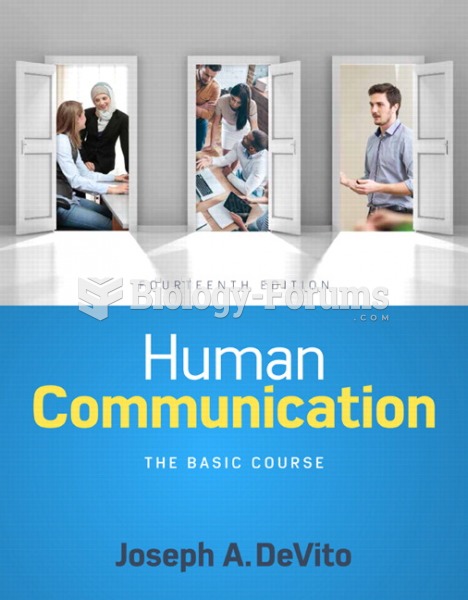Answer to Question 1
The six basic rules for participating effectively in a meeting are:
a) Prepare for the meeting: The first rule for effective participation in a meeting is to come
prepared. Learn all that you can about the topics to be discussed at the meeting. If there is an
agenda, study each item carefully and learn more about topics that are unfamiliar to you.
Being prepared also means coming to a meeting with a set of well-founded ideas. Ideas that
are worth listening to in a business meeting are the ones backed up by facts. People are often
opposed to a new idea merely because they don't know enough about it. Make certain that
you can supply facts that will support your ideas and that will help convince others of the
validity of your position.
b) Express opinions tactfully: When someone asks you for your opinion or when you volunteer
an opinion, be tactful in expressing yourself. Often, opposing points of view can cause strong
disagreement. No matter how strongly you may feel, your chances of winning that person's
support are better if you are tactful in presenting your views. Never tell someone that he or she
is wrong wrong is a strong term, and your right to use it requires indisputable evidence. In
selling your point of view, you will find the Yes, but . . . technique is more effective; in other
words, acknowledge the other person's point of view and show your respect for it. Then,
present your own ideas.
c) Make positive contributions: Most meetings are held for the purpose of solving problems,
and problems cannot be solved in a negative atmosphere. Participants must be willing to
approach a problem with the attitude that the only way to solve it is to present as many ideas
as possible. No one should immediately veto an idea; instead, each person should try to see
the idea's merits and try to enlarge upon the idea's possibilities, no matter how weak the idea
may seem at first.
d) Be courteous: The ideal meeting is one in which everyone participates freely. A speaker
who monopolizes the discussion will discourage the participation of others. Don't jump in while
others are speaking; wait your turn patiently. Show interest in what others are saying.
Courteous group members do not resort to sarcasm when they disagree with someone,
interrupt the person who is talking, fidget, gaze into space, or carry on side conversations with
other members of the group while someone else is speaking.
e) Keep remarks concise and pertinent: Some participants in a meeting take a roundabout
route to reach the point they want to make. They ramble endlessly. If you have something to
say, get to your point quickly. Meetings become boring and unproductive mainly because
participants insist on relating personal preferences, experiences, and opinions that have little
or no bearing on the discussion at hand.
f) Take notes: It is a good idea to develop the habit of taking notes at meetings, because the
act of taking careful notes keeps you alert, tells speakers that you consider their remarks
worth remembering, and provides a valuable reference source both during and after the
meeting. Take notes not only on what the speaker is saying but also on what you want to say
when it is your turn to speak.
Answer to Question 2
Guidelines for one-on-one communication include:
a) Establish the best atmosphere: One way to establish good relations with colleagues and
customers is to create a relaxed, conversational atmosphere. You can accomplish this in oneon-one conversations by sitting or standing so that there are no physical barriers between you
and the listener. Giving the other person your undivided attention shows courtesy and respect.
b) Listen attentively: Listening attentively and showing interest in the other person are just two
attributes of a good communicator. In a one-on-one conversation, you alternate between the
roles of speaker and listener. As a speaker, part of your responsibility is to listen to what the
other person says, to be courteous, and to get the necessary information.
c) Use the person's name: Be certain that you hear and remember the name of a person
whom you have met or talked with for the first time. Repeat the name right after it is given to
you. If you aren't absolutely sure of the person's name, ask that it be repeated. Then, after
hearing the name, pronounce it aloud in order to fix it in your mind. Whenever it is appropriate,
use the name once or twice during the conversation.
d) Permit others to talk: Do not do all of the talking. Give the other person an opportunity to
talk, while you listen attentively. Watch for signs that the other person wants to say something
or is becoming bored and is not listening carefully. No matter how interesting you think the
conversation is or how well informed or articulate you think you are, you must give your
listener a chance to speak.
e) Compliment when suitable: Compliments are always welcome, so compliment someone
whenever the occasion is appropriate. Paying a compliment is especially effective during
tense situations. If a valued employee or a customer has a complaint that you cannot justify or
remedy, you can put that person in a better frame of mind for a no answer by paying a
compliment. However, never pay a compliment unless you can do so honestly and
convincingly. Insincerity is easily detected.
f) Keep conversations concise: Since time is valuable, you should keep your conversations to
the point. If you are asked for opinions, give them clearly and concisely. Being concise,
however, does not mean you must be brusque. Try to sense the amount of information the
situation warrants and act accordingly.







